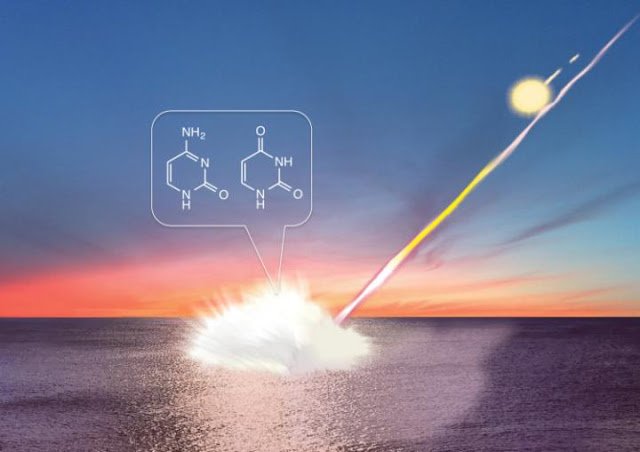| Online: | |
| Visits: | |
| Stories: |

| Story Views | |
| Now: | |
| Last Hour: | |
| Last 24 Hours: | |
| Total: | |
Meteorite Impacts Can Create DNA Building Blocks
All the genetic information of modern life is stored in DNA as sequences of nucleobases. However, formation of nucleobases from inorganic compounds available on prebiotic Earth had been considered to be difficult.
In 2009, this team reported the formation of the simplest amino acid, glycine, by simulating meteorite impacts. This time, they replaced the carbon source with bicarbonate and conducted hypervelocity impact experiments at 1 km/s using a single stage propellant gun (Figure 2).
Figure 2: This is a single stage propellant gun at National Institute for Materials Science Japan used for the hypervelocity impact experiments.

Credit: Dr. Yoshihiro Furukawa
They found the formation of a far larger variety of life’s building blocks, including two kinds of nucleobases and nine kinds of proteinogenic amino acids. The results suggest a new route for how genetic molecules may have first formed on Earth.
Contacts and sources:
Dr. Yoshihiro Furukawa
Assistant Professor, Department of Earth Science, Tohoku University
Dr. Takamichi Koybayashi
Principal Researcher, Ultra-High Pressure Processes Group
Materials Processing Unit, National Institute for Materials Science
Dr. Toshimori Sekine
Professor, Department of Earth and Planetary System Science, Hiroshima University
Journal: Earth and Planetary Science Letters (2015), http://dx.doi.org/10.1016/j.epsl.20015.07.049
Source:




